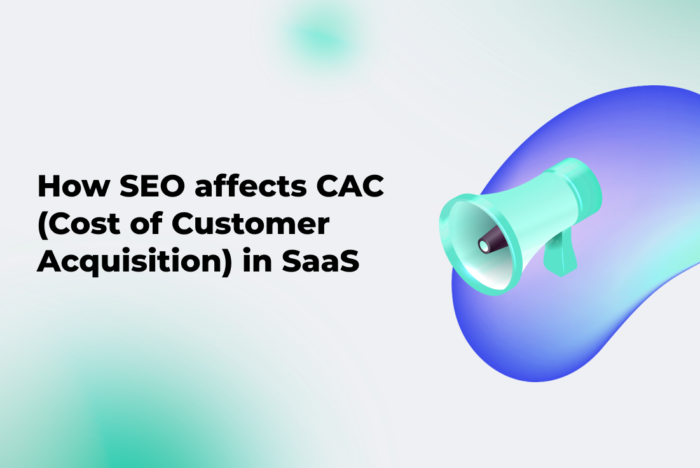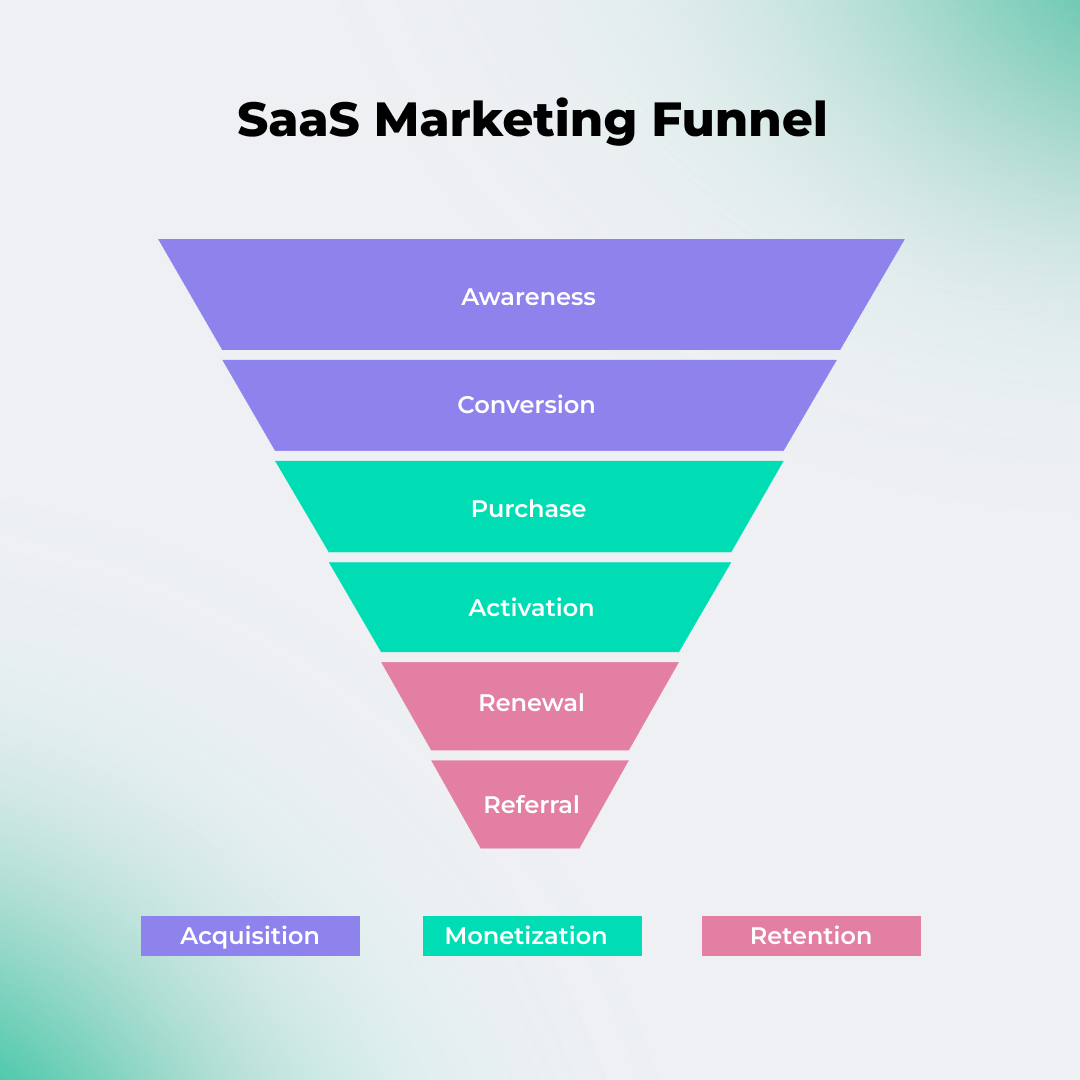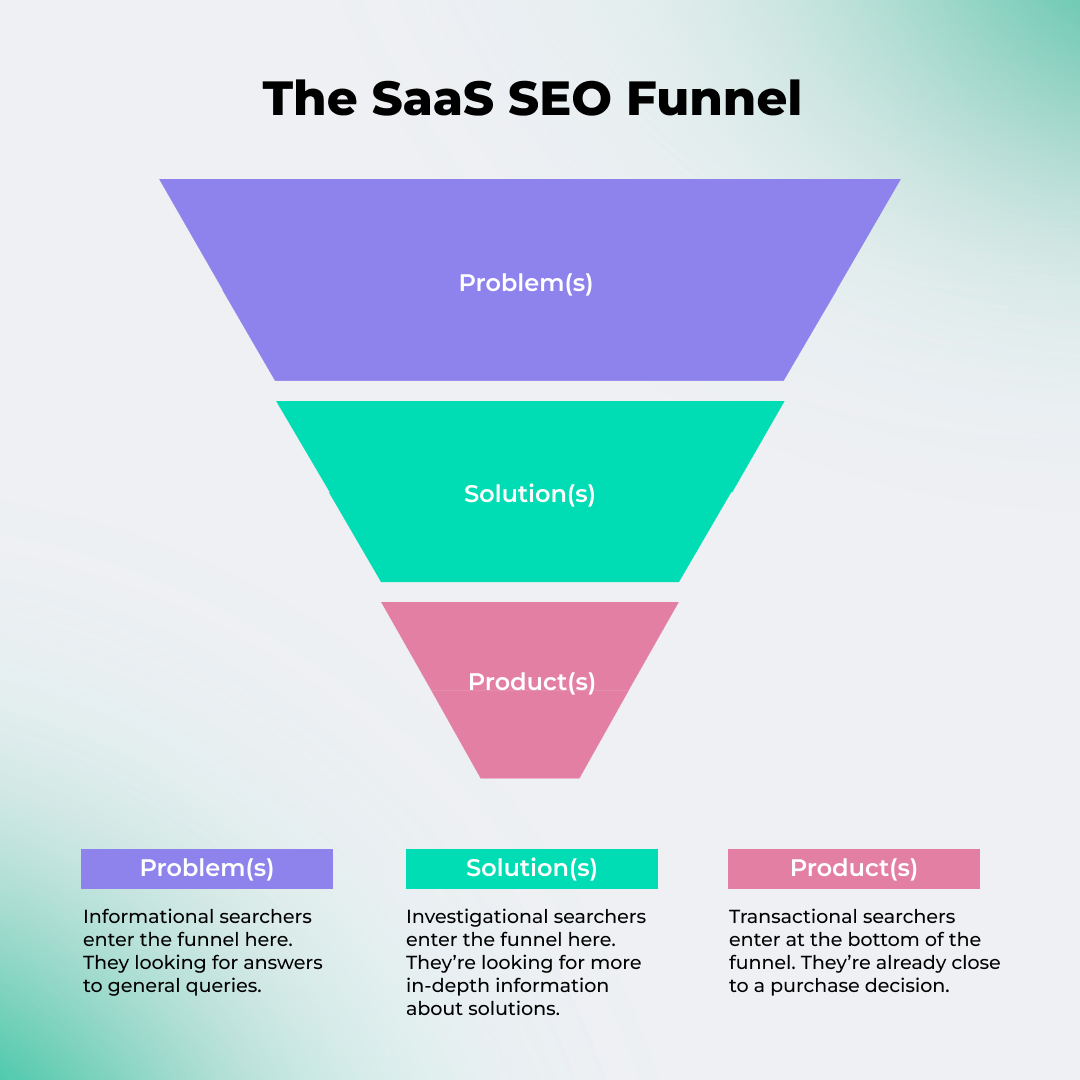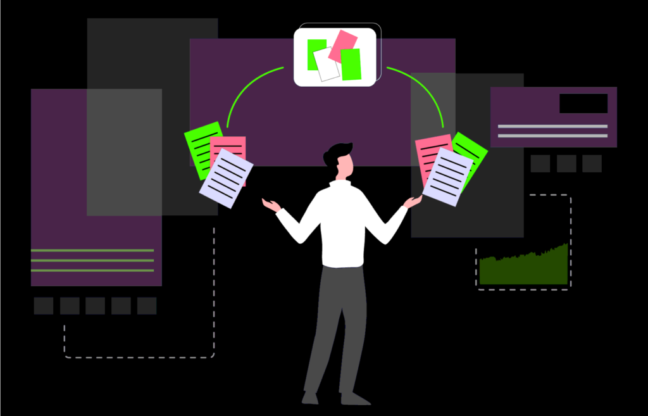Why Do SaaS Companies Need an SEO Strategy?
SaaS (software as a service) companies are gaining more and more popularity. Research shows that there is huge growth in this type of service on the market.
However, strong competition makes it harder to find customers. Your SaaS company may simply get lost among others in this niche. In addition, SaaS marketing is more complex than product marketing and is different from traditional promotion methods. The reason for this is the lack of a physical product to sell. It’s a real quest: convincing people to integrate software is much harder than selling a pair of shoes!
Therefore, in order to achieve their goals and generate a lot of valuable leads, companies need an appropriate strategy. And SEO has proven to be the most efficient strategy out there.
Of course, in the old fashioned way, one can look towards conventional PR and advertising, which also contribute to promotion. Yet, at certain stages, under certain conditions, an SEO strategy can be more effective and bring more results. Let us take a look at why SaaS companies choose SEO to acquire customers.
5 Reasons Why SEO works for SaaS Companies
1) Helps spread the word about your SaaS business.
Creating an exceptional product does not guarantee success. The public needs to know about it so that it can benefit both users and you. An SEO strategy will help promote your business and capture your target audience’s attention. Everything is simple. Search results that are at the top of the list are more trustworthy and memorable. And SEO will help you get to the top.
2) Increases traffic to your website.
SEO is one of the most scalable and strategic approaches to SaaS growth. Most people, including business owners, who are looking for a SaaS product start their search by querying Google or another search engine. To get to the top of search results, you need SEO assistance. Since the top result in SERPs gets 31.7% of all clicks – this means attracting a huge chunk of traffic.
In fact, you can predict how much traffic you will get by ranking at the top of a search query. This will help you understand how much worth investing in SEO.
3) Gives you an edge over your competitors.
People trust a business that appears at the top of search results, and your competitors know this very well. Therefore, they are most likely already taking steps to improve their position.
To stay ahead of the competition and prevent them from capturing the majority of potential customers, resorting to SEO is essential.
4) More people will subscribe to your software.
As mentioned earlier, trust in your company increases when people see your brand name at the top of the SERP. And if they go to your site and see the solution to their problem artfully inscribed in quality content, it will be harder for them to leave without subscribing to your product.
5) Saves the budget.
Paid advertising has a good appetite and can eat up a big chunk of your budget. In addition, if it is effective at the initial stage of the development of your SaaS company, then you need to move on to more effective strategies.
Curiously, SEO continues to work by inertia, sending customers to your site even after you stop optimizing at full strength. Advertising is a different story. Ads for which you no longer have the budget are removed and no longer bring customers to you.
How the SEO Strategy is Mapped to the Marketing Funnel for SaaS
You may be familiar with the marketing funnel concept. Funnel model can vary from industry to industry, but for SaaS companies, they commonly look like this:
The purpose of all SaaS companies is to attract as many people as possible into their funnel and encourage them to move down to the very bottom, increasing their engagement and loyalty.
In general, SaaS companies and even startups are now taking a holistic approach to promotion and marketing. SEO as an organic traffic channel to the site helps to correctly respond to user requests and questions that they google.
For SaaS, the role of SEO is especially important at the initial stage, or top of the funnel, called “Acquisition”. However, the rest of the funnel should be analyzed as well.
Marketing goals and channels of user acquisition
A marketing funnel is a diagram of how a person moves toward a purchase. This is an ideal scenario, but in life, everything can go differently.
For example, a person can “fall out” of the funnel, and then immediately return to one of the lower stages. Or learn about a brand from a friend’s rave reviews and immediately place an order, bypassing the upper stages.
The marketing model involves studying the buyer’s journey and developing different offers and activities for each stage of the funnel.
Knowing your buyers and their journey
To better understand the customer journey, to know where and at what step of the funnel to start communicating with them, build a CJM (Customer journey map). The map marks the user’s steps from learning about your SaaS company to buying on your website. CJM is suitable for any business, and it helps to speed up the user’s movement through the funnel.
Based on the collected map, identify the weak points in your funnel: the stages at which most of the visitors leave. These places in the funnel need to be worked on first.
Pre-Funnel SEO
This stage includes creating content aimed at attracting an audience that does not yet need your product. For example, some SaaS companies post useful informative articles on their blog that are not always related to their industry. They create a variety of content covering finance, marketing, and other topics, and generate more traffic to their site. Why is this needed?
First, it will increase brand awareness. If your company is known among those who are not yet on the path to buying your product, this will positively affect the formation of your brand and its reputation.
Secondly, it leads to an expansion of the audience. Fans of your brand who, while not in need of buying your product, may recommend it to others.
Top of the SEO Funnel
The top of the funnel represents those who have just set out on a journey. These people are aware of the challenge or problem they have, and they refer to the search engine to look for possible solutions to it. Your initial task is to understand what the potential client will write in their request. Then you adjust your content accordingly, using the necessary keywords.
This is the most appropriate stage for applying SEO in order to attract customers to your site. In this part of the funnel, the marketing goal would be to interest the visitor in order to move further to the mid-funnel part: to encourage them to leave their contact information or subscribe to the newsletter. Creating SEO-friendly content will assist you in this.
Give seekers what they want: detailed yet specific and understandable answers to their questions, containing issue solutions. Make sure that the data is up-to-date and really matches potential customers’ queries. Optimize content for keywords that are used by information search engines.
To find the right keywords, identify the difficulties your leads may need to tackle and brainstorm phrases related to them. Also, outline the specific solutions you suggest. All this can be placed in a table of three sections: problem, solution, and key phrases.
Middle of the SEO Funnel
Your mid-funnel inhabitants are not only aware of their problem but also aware of the existing options for solving it. However, they are in the process of thinking, as they have not yet decided which solution or product to choose. Perhaps they are doing a more rough study, analyzing each product individually and correlating its properties with the needs of their business.
This means that at this point of your SEO strategy, you need to ensure your prospective clients see the solutions they are looking for in your products. Tell them more about the products and tools you offer: their features, integration options, and use cases. Remember that superficial description is not enough, because this time you are creating content for those who already have a certain understanding of what you offer, but want to dig deeper into their research. Provide them with sufficient informative material and research tools. These could be tables comparing your products and their features, guides on how to use them, and so on.
Your mid-funnel SEO efforts should focus on generating leads who are one step away from buying. This means that there is one step left for them to move to the bottom of the funnel and become your customers.
Creating the deeply informative content we wrote about earlier also requires using the right keywords. This time, try to imagine niches from which visitors can come to you. Show how different types of software, as well as the specific features they provide, will improve their performance in their industry.
Bottom of the SEO Funnel
Those who reached the bottom of the funnel or entered it, skipping the upper parts, are not like those who are still in the previous phases of their journey. They already know more about what they need and are closest than ever to their destination – the purchase.
Most likely, such people hesitate between the software of several brands. And your task is to convince them that your product best suits their needs. Therefore, at this stage, the SEO strategy should be aimed not only at increasing traffic but also conversion.
What can be done? Since your visitor is likely looking at multiple brands, why not create comparison content? Let your product stand out from what your competitors offer. When creating this kind of content, you need to remain objective, but at the same time be able to emphasize your product advantages by providing strong evidence and facts. Such work involves collecting information and analyzing competitors, as well as brainstorming appropriate keywords.
Articles with market analysis and an overview of industry trends also work well. Let the reader see how naturally your brand fits into modern realities.
Success stories that feature your software, as well as testimonials from your clients, can also motivate someone to decide in favor of your company.
SEO techniques that affect CAC for SaaS Businesses
Сompetitors analysis and keywords research for SaaS
When developing an SEO strategy for SaaS, it’s also worth focusing on how brands compete in the marketplace and what strategy they use. Without it, you will not achieve your goals, because you will always be one step behind the market leaders.
Own experience is good. But if there is an opportunity to study someone else’s experience, draw the right conclusions, and use ready-made and successfully working solutions, then why not take advantage of this?
Knowing what other companies’ content works best in your industry will help you polish yours. You have to figure out what keywords your competitors are ranking for, what promotion channels they use, how much money they are investing, etc.
Thus, you will not be left behind by your industry opponents, on the contrary: you will be able to gain an advantage over them and eventually even become a leader in your market.
Working with the semantic core is one of the most important stages of SEO promotion. It is necessary to collect a pool of relevant keywords, structure them, and not make a mistake. If you use only high-frequency keywords and phrases, it will be difficult to oust your competitors. The situation is reversed for low frequencies. It is much easier to reach the top, but such requests lead to very few clients, and sometimes they do not lead at all. It is necessary to look for a golden mean in order to systematically move forward in search engines and increase traffic volumes with adequate investments.
Content strategy for SaaS companies 2022
According to some data, content creation generates three times more leads than traditional marketing and costs 62% less. Content strategy is a collective concept that includes business analysis, market research, and assessment of competitor activity. What to focus on, how to attract visitors, what channels to use – all this is important to think over and structure before starting work on content.
In 2022, your SaaS company will be able to win the race against its competitors only by resorting to a holistic B2B strategy. It includes the following steps:
Know Your Leads and Map Your Audience Needs
Your product is always within some value chain among others. Think about what other tasks your user solves before coming to you and after they have started using your product.
Make a List of Relevant Keywords
Consider what words and phrases your target audience will use when using Google Search. Make a list of the most important keywords that are directly related to your SaaS solution and that people might use when searching for a product or service. There are many paid and free tools that you can use to search for keywords by entering your topic or industry. The most popular are Ahrefs, Google Keyword Planner, Keyword Intelligence BiQ, and Moz.
Create High-Quality Niche Content
Focus not on promoting your product, but on creating first-class content that focuses on the needs of your potential customer. Make sure you use expert and in-depth content with the right keywords and links on all web pages. It should help in solving the client’s problem, show a specific way out of any situation, and introduce the product or service. Your website should be an attractive lead magnet for potential customers. Work on designing, creating catchy and informative pictures, videos, and infographics.
Simplify site navigation and the process of registering new users. Add a FAQ section and a page with real customer reviews.
Measure the level of user engagement
Track user behavior to understand how they interact with content, how long they stay on a particular page, where they click (what they are interested in), and on which pages they do not linger for a long time. There are free tools like Google Analytics, for example, which will provide you with extensive analytics to measure the success of your business. Analyze the received reports and act on improving your content accordingly.
Define your KPIs
It is very important to set specific goals and set a time frame for their implementation.
For example, you want to increase organic traffic by 20% per month or time your site is visited or sell a certain amount of your product.
Link Building for SaaS SEO
Link building is an extremely efficient and indispensable promotional tool. Not using it means losing some traffic and, therefore, profits. Link building allows you to increase brand awareness and establish yourself in the market as an authoritative expert.
In fact, this is an ideal and unobtrusive promotion of your website. When a respected resource places a link to your site, users are more likely to follow it. The thing is, it looks more like a recommendation than a paid advertisement. This means that people will trust you almost as much as they trust the site that links to your SaaS company.
The more such links and the longer they stay on the Internet, the stronger and more authoritative your link profile will be. This will automatically increase your ranking, and for Google, as well as ordinary users, your company will have value in the SaaS industry.
There are many link-building techniques. Therefore, in order to create a link architecture and site structure that will work for your company flawlessly, it is better to hire an SEO specialist. The cost of link building can vary greatly from $100 to $20,000 per month depending on quality and volume. If this is too costly for you, here is what you can do yourself:
- Use your connections
Ask professionals from your contacts or business owners who already use your product to refer to your SaaS company. Those who know you will be more responsive to your request.
- Benefit from integrations
If your SaaS product integrates with a third-party brand solution, ask them to link to your site.
- Deal with relevant and respected donors
If a spammy and dubious resource links to your site, this will badly affect the reputation of your company. Links to sites that have nothing to do with your product, niche, or content will not organically fit in and will be considered spam. Allow only reputable sources that are relevant to the SaaS industry to link to your content.
Crowd marketing for SaaS businesses
B2B companies can spend 3 to 12% of their income on marketing. The good news is that there is a type of marketing that not only saves your SaaS company budget, but it is also super effective. Crowd marketing also has to do with link building, as you place links to your website in social networks, other sites, or thematic forums. In addition, this type of promotion involves working on the reputation of your company and opens up the opportunity to interact with the target audience.
Where and how to find ground for crowd marketing?
To find sites for crowd marketing, use all the semantics you have. In the first stage, you just need to enter queries into the search engine and note all the sites that will be in the top 10. To check a resource trust, use, for example, the CheckTrust tool. Do not use a site with a lot of spam comments.
How to write a comment?
The text of your comment should not be clearly advertising. The perfect comment skillfully complements the content and demonstrates that you have carefully read the article and the discussion section. On good sites, you can leave comments even without a link, just with the domain name. If the link is placed, it is important that the text looks as organic as possible. Then there are chances that it will not be removed by the moderator.
Where to post comments?
Forums are a great place to post, where you can disguise recommendations as your opinion, responding to requests from a real audience.
Review sites and business listings can be great platforms for promotional work. Besides, it’s always interesting to know what people think of you. The most valuable of the sites are g2.com, capterra.com, crosdesk.com, trustpilot.com, betalist.com.
Q&A sites are a good option for promoting your SaaS company. Millions of users search for information using sites like Quora. You have a great opportunity to reach out to a potential audience. Search for questions on the desired topic and tell about yourself. Many questions with answers from Quora are at the top of Google. Therefore, you can receive regular traffic from it, unlike most other external sites.
Social nets like Facebook have many valuable pages and groups with an active audience. To get started, join all thematic publics, regularly answer questions related to your product, do not skimp on words, and carefully study user problems. For SaaS companies a must have is to create a company profile on LinkedIn.
SERM for SaaS
The more successfully and better the image of your SaaS company is presented in the search results, the more trust and loyalty the user has to it. Conversely, a damaged and unformed reputation, due to the young age of the company and the lack of sufficient information on external resources, can become a problem for the company’s success.
A bad reputation can have several reasons: poor quality of goods/services, people like to leave negative reviews, and slander from competitors.
Whatever the reason, there is always a set of steps you can take to improve your brand’s reputation in SERPs, and this is called SERM.
SERM usually consists of three stages:
- reputation analysis;
- building an improvement strategy;
- strategy implementation.
Initially, you can turn to Google to find out what people are saying about you. Then make a plan of action based on the information received. There is always room for improvement.
In general, SERM includes the above strategies. This includes working with various Internet sites in order to create a company’s presence on the network and creating high-quality content with the right keys and backlinks. The image of your SaaS company will be positively affected by video reviews of its products. You can also ask bloggers or experts in your niche to write a review.
Apart from creating a positive image of the company, it is also important to deal with negative reviews, ratings, and testimonials. They can not be ignored, but competently respond to unflattering statements that can affect a successful business.
You can hire professionals to look after your online reputation. The cost of online reputation management depends on how big the company is and how complex the reputation problems are. Therefore, pricing can range from $300 per month to over $50,000 per month.
Bottom Line
Promoting SaaS is not an easy task, but a good SEO strategy is quite capable of handling it. In reality, this is a whole complex of different strategies and methods that no target audience can resist. Naturally, SEO can have a significant impact on CAC, especially if you entrust the matter to competent professionals. However, everything that works for the success of your SaaS business costs money, because in the end, it will return many times over.





